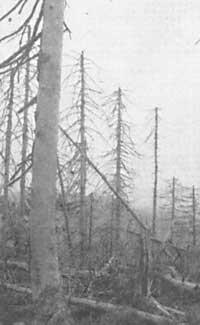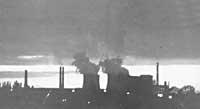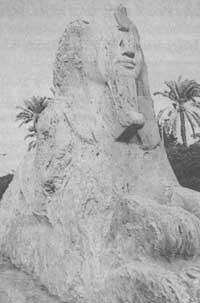Is acid rain in forest deterioration the real culprit?
1986/10/01 Tapia, Xipitri Iturria: Elhuyar aldizkaria

In an interview with Burkhard Frenzel, Director of the Institute of Botany at the University of Stuttgart-Hohenheim in the German magazine "Welt am Sonntag", the results of research on the mysterious disease that European forests are suffering have been published for the first time.
From autumn 1983 Mr. Frenzel discovered a series of “sapan makilatxo” type viruses of trees of 300-500 nanometers in length. These viruses are not unknown to specialists in rural diseases. Mr. Cech, Czechoslovak botanist, observed in 1961 the aforementioned viruses on the roof of the trees that presented a similar symptom. Mr. Schmelzer also discovered the same viruses in his aunt in 1966.
Despite his strangeness, French's statements seem to condemn what has so far been thought of, namely that automobile gases were the main cause of forest diseases. Therefore, factory processing products, atomic power plants and car pollutants (acid and photooxidant precipitation, such as ozone) are not the most important harmful agents. But this has not been proven so far. However, it can be ensured that trees dying from this new disease stopped growing twenty or thirty years ago. At the same time the veins have been losing some special mushrooms and, of course, they are increasingly difficult to absorb food substances and water.

It would be fair to think, for an unknown reason, that since the war the trees have reduced their level of photosynthesis and, therefore, have been left without strength before insects and parasites. In fact, these insects that left Slovakia after the war moved to the territory of Western and Middle Europe, when the first problems began.
So Frenzel's suspicion is that there is no pollution or insects. Not as a direct agent, but as a transmitter agent.
However, placing ourselves alone at the height of viruses and insects and discarding the influence of pollutants would be a blindness. Although in this story it is difficult to measure the role of pollutants, it seems increasingly reliable to consider it a driving agent. But the problem of pollutants is not of today, but of a few years, since the use of anti-insect pesticides has been previous and it is demonstrated that where there is sulfur harmful viruses develop very well.
On the other hand, Frenzel, specialist in the history of forests, knows that thanks to the experience of the years, sick trees do not perceive weather changes from year to year. According to this observation, two conclusions can be drawn:
- This disease is not new and existed for example in the middle ages.
- This disease is not always deadly.
The first conclusion is to reduce the effects of Frenzel contaminants. Finally, it must be said that Frenzel has found harmful viruses not only in sick trees, but also in those who are not sick, but in a lesser proportion. How and when do these viruses damage? how do they spread and develop? From now on, reader, you have the judgment.

Gai honi buruzko eduki gehiago
Elhuyarrek garatutako teknologia






